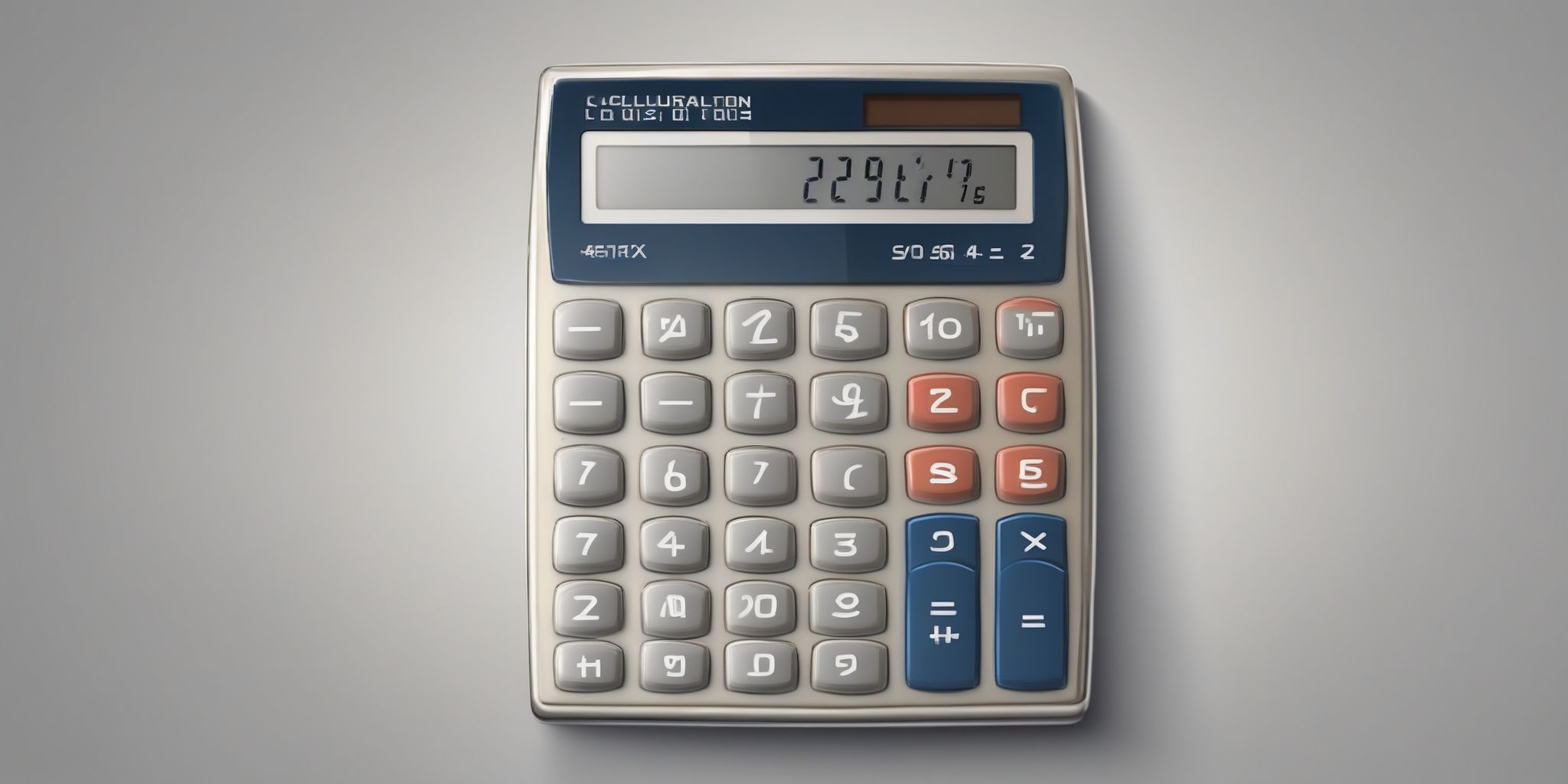A Step-by-Step Guide to the Tax Preparation Process
Tax season can often feel like being caught in an intricate maze, with confusing forms, convoluted rules, and that constant nagging feeling that you might've missed something important. It's a rite of passage that everyone must go through, but fear not! We're here to demystify the tax preparation process and guide you through each step with clarity and simplicity. So, grab a cup of coffee, sit back, and let's navigate this tax journey together, uncovering all the hidden gems along the way.
What is the Tax Preparation Process?
The tax preparation process involves gathering and organizing all necessary financial documents to accurately report your income and deductions to the tax authorities. It is the method by which individuals or businesses ensure compliance with tax laws and fulfill their tax obligations. This process typically includes determining your filing status, understanding tax deductions and credits, calculating taxable income, determining tax liability, and ultimately submitting your tax return.
By following this process diligently, taxpayers can ensure that they accurately report their financial information and take advantage of any eligible deductions or credits, potentially minimizing their tax liability. Preparation is key to avoiding errors and potential penalties during tax filing.
Why is the Tax Preparation Process Important?
The tax preparation process is an integral part of managing your finances and ensuring compliance with tax laws. By thoroughly preparing your taxes, you can:
- Minimize errors: Proper tax preparation helps reduce the likelihood of errors on your tax return, which can help you avoid penalties and unnecessary audits.
- Optimize deductions and credits: Understanding the tax code allows you to identify potential deductions and credits that can lower your tax liability and maximize your refund.
- Plan for future financial goals: By reviewing your financial records during the tax preparation process, you gain insights into your income, expenses, and investments, helping you make informed decisions for your future financial planning.
- Maintain financial transparency: Accurate and organized tax preparation fosters transparency in your financial affairs, demonstrating compliance and integrity to tax authorities and potential lenders or investors.
Step 1: Gather All Necessary Documents
Organizing Your Financial Records
Organizing your financial records is an important first step in the tax preparation process. Start by gathering all relevant documents such as W-2 forms, 1099 forms, and receipts for deductible expenses. Create a system to categorize and store these documents, whether it's using folders in a filing cabinet or digital folders on your computer. This will help you easily locate the necessary information when filling out your tax forms.
Consider using software or apps that can assist in tracking income and expenses throughout the year, making the organization process smoother. Being organized saves time and reduces stress when it's time to do your taxes.
Documents You May Need
- W-2 Forms: These show your earnings and taxes withheld from your employer(s).
- 1099 Forms: If you earned income from freelancing or independent work, these forms will report your earnings.
- Receipts for Expenses: Collect receipts for deductible expenses such as medical bills, charitable donations, and business expenses.
- Mortgage and Property Tax Statements: These documents are necessary if you own a home and want to claim related deductions.
- Investment Statements: Include forms that detail your capital gains, dividends, or losses.
- Education Records: Gather forms related to student loans, tuition payments, and educational expenses.
- Health Insurance Information: Have your insurance forms in hand, including statements of coverage or exemptions.
- Business Records: If you own a business, bring records of income, expenses, and related deductions.
- Social Security Numbers: You'll need yours, your spouse's, and any dependents' numbers for accurate filing.
- Bank Statements: Having these handy helps verify reported income and deductions.
Remember to keep these documents organized throughout the year to streamline the tax preparation process.
Tips for Gathering All Required Documents
When gathering all the required documents for the tax preparation process, organization is key. Start by creating a checklist of necessary documents, such as W-2 forms, 1099 forms, receipts, and bank statements. Group related documents together, making it easier to find what you need. Consider using digital tools like scanning apps or cloud storage to keep everything in one place. Label folders or envelopes for different categories to stay organized.
It's also helpful to keep track of any important deadlines, so you have ample time to locate any missing documents. By staying organized and having a system in place, you can streamline the document gathering process for tax preparation.
Step 2: Understand Your Filing Status and Deductions
Determining Your Filing Status
Determining your filing status is an important step in the tax preparation process. Your filing status determines how you will be taxed and can impact the tax rates and deductions available to you.
There are five filing statuses: Single, Married Filing Jointly, Married Filing Separately, Head of Household, and Qualifying Widow(er) with Dependent Child. It's essential to choose the correct status to ensure you're paying the right amount of taxes.
For example, if you are married, you can file jointly with your spouse, which may provide certain tax benefits. However, in some cases, choosing to file separately may be more advantageous.
To determine the appropriate filing status, consider factors like marital status, dependents, and financial independence. If you're unsure, consult the IRS guidelines or seek help from a tax professional to ensure you make the right decision.
Understanding Tax Deductions and Credits
When navigating the tax preparation process, it is important to have a clear understanding of tax deductions and credits. Tax deductions are expenses that can be subtracted from your taxable income, reducing the amount of taxes you owe. Examples of deductions include mortgage interest, student loan interest, and medical expenses. On the other hand, tax credits directly reduce your tax liability dollar-for-dollar. Common credits include the Child Tax Credit and the Earned Income Tax Credit. By identifying eligible deductions and credits, you can potentially decrease your tax burden and maximize your refund. It is crucial to research and stay updated on available deductions and credits applicable to your specific situation to optimize your tax return.
Maximizing Your Deductions
To maximize your deductions during the tax preparation process, it is important to identify all eligible expenses and ensure you have the necessary documentation to support them.
For example, if you work from home, you may be able to deduct a portion of your rent or mortgage interest as a home office expense. Similarly, keeping track of your business-related expenses such as travel, meals, and supplies can help reduce your taxable income.
Additionally, contributing to retirement accounts like a 401(k) or IRA can provide tax deductions while saving for the future. By diligently identifying and documenting eligible deductions, you can potentially lower your overall tax liability.
Step 3: Choose Between Standard and Itemized Deductions
Understanding Standard Deductions
Standard deductions are a predetermined amount of money that filers can subtract from their taxable income. They provide a simplified way to reduce taxable income without the need for detailed record-keeping. The standard deduction amount varies based on filing status and changes annually. For example, in the tax year 2021, the standard deduction for single filers is $12,550, while for married couples filing jointly, it is $25,100.
By opting for the standard deduction, taxpayers can potentially save time and effort compared to itemizing deductions. It is particularly advantageous for individuals with limited eligible expenses or those who find itemizing overwhelming. However, it's essential to evaluate which deduction option - standard or itemized - will result in a lower tax liability before making a decision.
Itemizing Your Deductions
- Itemizing deductions can help you reduce your taxable income and potentially lower your tax liability.
- Start by identifying deductible expenses such as mortgage interest, state and local taxes, medical expenses, and charitable contributions.
- Keep thorough records and receipts to support your deductions in case of an audit.
- Be aware of the limits and requirements for each deduction category to ensure eligibility.
- Take advantage of lesser-known deductions like student loan interest or job-related expenses.
- Consider consulting a tax professional or using tax preparation software to ensure accuracy and maximize your deductions.
- Remember to compare your total itemized deductions with the standard deduction to determine which option is more beneficial for your situation.
Calculating the Value of Itemized Deductions
Calculating the value of itemized deductions is an important step in the tax preparation process. It involves adding up all eligible expenses within specific categories, such as medical expenses, mortgage interest, or charitable contributions, to reduce taxable income. To accurately determine the value, keep detailed records and receipts throughout the year.
For example, if you are claiming deductions for medical expenses, gather receipts for doctor visits, prescriptions, and health insurance premiums.
Additionally, be aware of any limitations or thresholds that may apply to certain deductions. Taking the time to calculate and document your itemized deductions can help maximize your tax savings.
Step 4: Calculate Your Taxable Income
What is Taxable Income?
Taxable income refers to the portion of your income that is subject to taxation. It includes various sources such as salaries, wages, tips, and self-employment earnings. However, not all income is taxable. For instance, certain benefits like life insurance payouts or gifts are exempt. Deductions and credits can also reduce your taxable income. Understanding what constitutes taxable income is crucial for accurate tax preparation.
For example, if you earn $50,000 per year and have $10,000 in deductions, your taxable income would be $40,000. Being aware of what income is taxable helps you determine your tax liability and ensure compliance with tax laws.
Exclusions and Allowable Deductions
Exclusions and allowable deductions are important considerations in the tax preparation process. Exclusions refer to income that is not subject to taxation, such as certain scholarships or gifts below a certain value. On the other hand, allowable deductions are expenses that can be subtracted from your taxable income, reducing your overall tax liability. Examples of common deductions include mortgage interest, student loan interest, and certain medical expenses.
By understanding these exclusions and deductions, you can ensure that you are taking advantage of all available opportunities to minimize your tax burden. It's important to consult relevant tax guidelines or work with a tax professional to ensure you are correctly applying these exclusions and deductions to your specific situation.
Reporting Your Taxable Income
Reporting your taxable income is a fundamental step in the tax preparation process. It involves declaring all the income you earned during the tax year to the relevant tax authorities. This includes wages, self-employment earnings, rental income, and any other sources of income. It is important to report your taxable income accurately and honestly to avoid penalties and potential audits.
Additionally, you should be aware of any exclusions or deductions that may reduce your taxable income, such as contributions to retirement accounts or certain business expenses. Keep thorough records of your income sources and consult tax forms and guidelines to ensure proper reporting.
Step 5: Determine Your Tax Liability
Understanding Marginal Tax Rates
Marginal tax rates play a significant role in the tax preparation process. These rates determine how much tax you owe on each additional dollar of income. It's important because they affect your overall tax liability. As you earn more, your income falls into different tax brackets with varying tax rates. For instance, if your income crosses a certain threshold, you may move into a higher tax bracket and owe more in taxes. This understanding enables you to make informed decisions about income-generating activities and potential deductions. By evaluating the impact of marginal tax rates, you can strategize to minimize your tax burden and optimize your financial situation.
Calculating Your Tax Liability
Calculating your tax liability is a crucial step in the tax preparation process. Start by understanding marginal tax rates, which determine the percentage of your income you owe in taxes. These rates increase as your income rises, resulting in a progressive tax system. To calculate your tax liability, consider your income, deductions, and tax credits. Subtract your deductions and credits from your taxable income to reach your taxable amount.
Then, apply the appropriate tax rate to find your final tax liability. By accurately calculating your tax liability, you can ensure you pay the correct amount and avoid penalties or underpayment issues.
Considering Tax Credits and Payments
When determining your tax liability, it is crucial to consider any tax credits and payments that may reduce the amount you owe to the government. Tax credits directly lower your tax liability, while payments, such as estimated tax payments or withholdings, can offset the amount owed.
For example, you might be eligible for the Child Tax Credit if you have qualifying children, or the Earned Income Tax Credit if you meet certain income criteria.
Additionally, if you made any estimated tax payments throughout the year, be sure to include them in your calculations. By taking advantage of available tax credits and factoring in payments, you can reduce your overall tax burden.
Step 6: Submit Your Tax Return
Choosing the Right Filing Method
Choosing the right filing method is an important decision in the tax preparation process. Electronic filing offers convenience, speed, and accuracy, allowing you to submit your return online. This method often results in faster refunds and reduces the risk of errors. On the other hand, paper filing may be preferred by individuals who value a physical copy or have complex tax situations. It allows for manual review and signature before mailing to the tax authorities.
Consider your preferences, level of comfort with technology, and the complexity of your return to make the best choice between electronic and paper filing methods.
Electronic Filing vs. Paper Filing
When it comes to filing your taxes, you have the option of electronic filing or paper filing. Electronic filing offers several benefits, such as quicker processing and faster refunds. It also reduces the chances of errors as the software automatically performs calculations. Moreover, electronic filing allows for easy access to past tax records and receipts, making it convenient for future reference.
Tips for Filing Your Tax Return
When filing your tax return, keep these tips in mind:
- Double-check your information: Ensure that all personal details, such as your name and Social Security number, are accurate before submitting. Mistakes can lead to delays or even penalties.
- Use electronic filing: E-filing is faster, more secure, and can help you receive your refund quicker. Many tax software programs offer e-filing options that simplify the process.
- Keep copies of your return: Make sure to keep copies of your filed tax returns, as well as any supporting documents, for future reference.
- Review for errors: Before sending, review your tax return for errors or omissions to avoid potential problems in the future.
- Understand deductions and credits: Stay informed about eligible deductions and credits to maximize your potential tax benefits.
Consider consulting tax resources or a professional if needed.
Conclusion
The tax preparation process can be complex, but with a step-by-step guide, it becomes easier to navigate. The first step is gathering all necessary documents, such as W-2 forms and receipts.
Next, it's important to choose the right tax filing method, either by paper or electronically. Then, organizing and categorizing expenses and deductions helps maximize the chances of a favorable outcome. Once all information is ready, it's time to fill out the tax forms accurately, including any applicable credits or deductions. Lastly, reviewing the completed forms is crucial to avoid errors and ensure compliance. By following this step-by-step process, taxpayers can effectively prepare and file their taxes.


